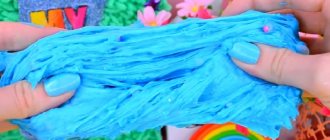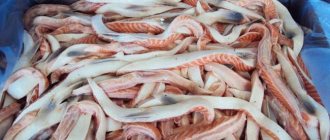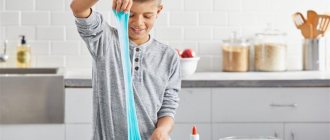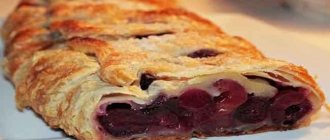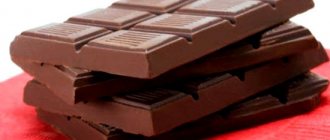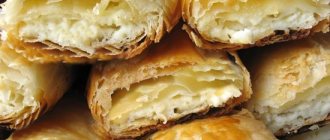Main components
Edible glue is distinguished by the fact that it is created on the basis of natural ingredients that are harmless to the human body. The industrial fixative most often includes:
- water;
- citric or acetic acid as a preservative;
- additive E466 - sodium carboxymethylcellulose, which can add viscosity to the mixture;
- potassium sorbate.
The release form can be of two types - liquid or powder. The first one can be used immediately; the powder one requires time to prepare. Today there are many recipes based on which you can make food glue from ordinary products at home. For this you will need:
- chicken egg whites;
- white or dark chocolate;
- lemon acid;
- flour;
- powdered sugar;
- sugar syrup.
The glue is easy to prepare, it sets quickly and can easily withstand temperature changes. You should not prepare the mass in large quantities, since its consumption is economical.
Magic Colors
Magic Colors brand edible glue is a thick mass, ready for use. The components it consists of are of plant origin. The liquid has good fluidity and density. The adhesion of the components is strong, so glue is often used to connect elements made of mastic and marzipan figures.
The mixture is applied to the surfaces to be glued together, and after some time their fastening becomes reliable. Edible glue is very useful if small elements on the cake have been damaged. It's easy to fix the situation with Magic Colors, with just one touch of the brush. The composition will help if the cook is faced with the task of combining rather massive mastic decorations.
Rainbow edible glue
The food glue of this brand is based on carboxymethylcellulose. It is obtained from caustic soda and cellulose. The substance is tasteless and odorless. Used to thicken and obtain viscosity. Rainbow edible glue is often used by professional pastry chefs to create designer pastries and wedding cakes.
It is not an allergenic product; no reactions of this type have been observed. Vegetarians can eat products using this glue, since the composition does not contain components of animal origin. Rainbow edible glue is produced in the UK. You can buy it in plastic containers of 25 or 50 grams.
QFC Essentials Edible Glue
English brand cooking glue has an edible “sugar” composition. It is ideal for preparing culinary mastic, from which flowers, decorations, and figurines are made. Its high adhesive ability helps to hold heavy dessert decorative elements. The QFC Essentials composition sets quickly and is resistant to temperature changes. Edible glue has the appearance of a colorless viscous liquid. Packaged in plastic containers of 18 grams.
What is pastry glue used for?
Edible glue, just like regular glue, is used to connect the components of a product. The edible composition is used to fix the cake layers and various decorative elements. The thick mass is used to decorate gingerbread cookies, cupcakes, and pastries. It is used for decoupage of Easter eggs and other ready-made dishes.
Confectionery glue will help hide imperfections in the coating on the cake or disguise the mistake of a clumsy cook. Professionals use a clamp to connect small parts of a large mastic figure.
The product can be given to children. An exception is for allergy sufferers and diabetics, since the composition contains a lot of sugar and dyes.
View this post on Instagram
A post shared by Pastry shop in Anapa (@sladkiydekor_shop_anapa) on Oct 21, 2021 at 1:42am PDT
How to make your own tile adhesive?
For interior work in a house or apartment, where complex mixtures for laying tiles are not required, you can use a solution prepared yourself. Materials you will need:
- fresh cement grade not lower than 300 – 1 part;
- fine-grained sifted sand - 5 parts;
- water - on request;
- plasticizer – 1/25 part.
PVA glue, slaked lime, silicate glue or liquid soap are suitable as a plasticizer. First, cement and sand are mixed, then the mixture is brought to the desired plastic consistency with water. At the last stage, when all the lumps disappear, add any of the plasticizers.
Beginners should know that the solution prepared from the dry mixture must be used as quickly as possible, but without haste. You cannot leave the glue on the next day - even if it does not completely harden, its beneficial properties will be lost.
Possible side effects
There are secrets in the preparation and use of mastic jewelry, knowledge of which allows you to prevent an unexpected final result:
- the powdered sugar used to make mastic is prepared carefully and ground very finely, otherwise the layer will tear when rolled out;
- mastic cannot be applied to a raw cake (sour cream, impregnation), since it can dissolve upon contact with moisture;
- Before applying mastic to the butter cream, the dessert is placed in the refrigerator so that the cream hardens well;
- small decorative details can be glued by moistening them with water or egg white with powdered sugar;
- if you glue the figures and put the cake in the refrigerator, they can absorb moisture and fall off, so the decor is attached before serving the dessert;
- details made from marshmallows can be painted with food coloring;
- when the mastic cools, it loses its elasticity, which can be restored by placing the decorative material in a microwave oven or a heated oven;
- the remaining mastic is stored in the freezer - up to two months or two weeks on the refrigerator shelf;
- Dried but unused figures are placed in a box and stored for 1.5 months.
Rules for working with adhesive composition
Advice for novice pastry chefs from more experienced comrades:
- Mastic products must be prepared long before assembling the cake. This way you can check how they behave on dessert.
- Each decorative element should be dried separately from the rest so that they do not stick together.
- Small parts can be joined with plain water. Just moisten the elements and fix on the cake.
- Edible glue will help secure large parts.
- Confectionery glue made from egg whites is applied to the product using a pastry syringe or brush.
- When decorating, it is advisable to wear gloves and use tweezers to grab parts. This way you won't damage the small parts.
The confectionery fixative is applied to the decorative element and to the surface to be fixed. They do not connect immediately, but after 1–2 minutes.
Interesting video on the topic:
How to get the right taste and consistency
The pastry glue should have a neutral taste and smell so as not to overwhelm the main dish. A fixative that is too thick or liquid, or a composition with lumps will not provide a reliable connection and will spoil the appearance of the product.
Little things that affect taste and consistency:
- Sometimes the powdered sugar clumps together, forming one big lump. Take the time to crush it as finely as possible. Otherwise, the mastic will tear when rolling.
- Do not apply the pastry mixture to the soaked cake layer, only to the dry cake layer. The glue may dissolve due to the large amount of sugar.
- If you are using buttercream, let it cool thoroughly in the refrigerator before applying the mastic.
- Decorate the cake shortly before serving, otherwise the figures will get wet and stop holding their shape.
- If some elements dry out while decorating the cake, place them in the microwave for a few seconds. This will return them to their previous state.
Mastic can be stored in the freezer for up to two months, and in the refrigerator for no more than two weeks.
Preparation of edible glue
To prepare the glue, SMS is diluted in water in a ratio of 1:30 (sometimes a ratio of 1:45 is recommended), after placing it in a screw-on bottle (a bottle from kandurin is excellent) and shaken well. At first, pieces of thickener will be visible in the water, but within a day they will disappear and the solution will take on the appearance of a transparent liquid. If the glue comes out too thick, it is diluted again with water. Very little glue is consumed: a teaspoon diluted in 50 milliliters of boiled, cooled water will last for several months. In addition, it does not deteriorate over a long period of time.
What is conductive adhesive and in what cases is it advisable to use it?
In everyday life, there is often a need to connect several parts together without using a drill. And sometimes an additional condition is the high electrical conductivity of the connection. In such cases, conductive glue is used.
It is widely used in the creation of electronic devices for attaching various elements to an integrated circuit. It is also an indispensable element in the automotive industry for fastening and sealing wiring.
But if desired, it can be made at home from readily available materials.
How to make glue with your own hands - basic methods
- 1. Buy any quick-drying glue or special varnish at the supermarket.
- 2. Take a simple pencil with a rod hardness of M4 or M2, remove the graphite from it and grind it into fine dust in any convenient way.
- 3. Without opening the tube cap, carefully unscrew the foil from the bottom and align it.
- 4. Through the hole that appears, pour graphite dust into a tube of glue and mix everything thoroughly until a homogeneous mass is formed.
- 5. Wrap the foil back and press it tightly to ensure the interior is completely sealed.
As you can see from the step-by-step instructions, the method is incredibly simple, fast and cheap. This will create an adhesive that is quite suitable for solving everyday problems. The only negative is that it cannot be used on painted metal surfaces. This conductive adhesive is suitable for glass, linoleum and other materials.
There is a more expensive and complex method of preparing the material:
- At a chemical store we purchase silver nitrate or ordinary nitric acid with a capacity of no more than 10 milliliters.
- At a pharmacy or clinic we purchase a 1% formaldehyde solution and ammonia.
- Next, we combine all three substances in equal parts and observe a violent chemical reaction, as a result of which a silver precipitate is formed.
- We isolate the precipitate from the solution using filtration and distilled water.
- We heat the resulting precipitate for several minutes at a temperature of 100-150 degrees Celsius to evaporate excess liquid.
- Next, you need to add a few drops of ethyl alcohol to the resulting black powder, and then mix the substance with quick-drying glue, in the same way as described in the first preparation method.
This method will require a lot of effort, time and finances. But the result will be better. This conductive adhesive is also suitable for cables and other complex electronic elements.
According to its characteristics, it will actually repeat the factory product. Self-production of materials is usually resorted to by people who like to do things with their own hands.
For everyone else, it will be easier to buy a professional composition and not worry about its quality.
Properties of conductive adhesive composition
- — dry instantly so that the high pace of the master’s work is not lost;
- - have sufficient viscosity so as not to spread over the entire surface of the treatment, but remain in a clearly defined area of responsibility;
- — have good adhesion to any material and substance;
- — have a high level of electrical resistance;
- — meet environmental safety standards;
- - have thermal stability, since soldering is often used on microcircuits, and they also heat up during operation.
Types of glue
Another conductive adhesive, DoneDeal, works on a slightly different principle. The delivery set includes two special syringes, one of which contains the glue itself, and the other contains conductive paste.
During operation, they are mixed, and the paste is applied to the contact, and the top is sealed with glue. This significantly increases the conductive properties and ensures reliable fixation of the product. According to many, this model is currently the best on the market.
Its only drawback is that it dries quickly after opening the tube.
It is not worth buying a large package, because the product quickly hardens after opening, and you will still have to purchase a new tube for the next repair.
It is no longer possible to dilute dried glue without compromising its technical characteristics, so it is better to immediately discard this idea.
A link to promplace.ru is required
What glue to use to glue porcelain
Porcelain is more fragile and breaks more often; you need to ensure the safety of such dishes. For repair use:
- Epoxy glue or resin.
- Material of domestic manufacturer: carbinol glue.
- Cement made from gypsum. A good analogue to standard glue, the main advantage of which is that you can prepare it yourself.
- Homemade material for gluing, for preparation you only need protein and soda.
- Regular food glue.
Cooking cold porcelain
First you need to understand what cold porcelain is. This is a modeling mass from which flexible, lightweight parts of various figures are well formed. This type of porcelain is most often used in handicrafts because its preparation does not require any hard-to-find materials. All recipes are simple; they may contain special glue or be absent altogether.
Cold porcelain figurines
Glue for cold porcelain must be selected especially carefully. If it turns out to be of poor quality, instead of good work, the output may be something unpronounceable. Regular PVA is perfect for such work. Any type of such material is heat-resistant, which is one of the main selection criteria. The exception is clerical, which is afraid of frost and heat.
Current popular companies:
- Moment is a common material and is in good, frequent demand among needlewomen and craftsmen.
- Tytan is less famous, but after working with it, people leave good reviews.
- PVA glue manufactured by Lakra - there is furniture and universal glue, the series is widespread.
- Thesis and Expert, good materials, are not as popular as the previous ones, but those who used them were satisfied. Therefore, the companies received good reviews.
Regardless of the chosen manufacturer, PVA glue will glue cold porcelain perfectly, the work will be neat, and there will be no problems with subsequent restoration of the product.
PVA glue manufacturer Lakra
How to process cold porcelain without glue?
Cold porcelain without glue is usually used by needlewomen to create figurines, home decorations, just to please the eye, calm the nerves, or occupy yourself in your free time. A few simple recipes that you can prepare at home without much effort or stress.
The simplest recipe for which you will need: a quarter glass of water, soda and starch. Mix all this and put on low heat. Bring to a boil, wait until the resulting mixture becomes thick. Such a mass is easily separated from the walls of the dish, you can pick it up and sculpt any product. As you can see in the photo, the work turns out neat and does not require much time.
Purpose and scope of application
The areas of application are determined by the properties of the adhesive. Since it holds wood and paper surfaces well, the composition is actively used in construction and furniture production. The environmental friendliness of the substance allows it to be used in the food industry.
Furniture manufacturing
The composition has a number of advantages:
- resistance to high temperatures;
- safety;
- non-toxic;
- water resistance;
- improvement of tree structure.
Construction
During construction work, putties and putties containing the substance are indispensable. Casein paints are used to finish the facades of concrete, brick and plastered buildings, as well as to obtain washable interior finishes.
Painting and typography
Casein-based paints are used in painting and printing. Thus, emulsion casein-oil paint is used for decorative painting on cardboard, canvas, wood, concrete and stone; it is applied to a primed surface.
Chemical industry
Acid casein is used in the chemical industry as an additive in paper production. Included in varnishes and paints. The dye and cosmetics industry is also a major consumer of casein.
Food industry
As a natural animal protein, casein is highly nutritious. This protein is often included in infant formulas and nutritional supplements for athletes.
Label production
Casein glue is used in a number of industries to glue labels to glass containers. In this case, modified starch is usually included in the composition.
Iconography
Since ancient times, paints of animal origin, such as eggs, have been used to paint icons. Currently, casein paints are often used because after drying they are waterproof, but at the same time breathable, that is, permeable to gases and moisture.
Types of glue for plastic
Gluing materials whose components are synthetic polymers is sometimes much more difficult than gluing metal, glass or ceramics. Low adhesion of plastic is caused by the presence of a smooth surface of the plastic. Most adhesives on the market contain a special mixture that dissolves synthetic polymers.
After compressing the parts being connected, the upper layers of plastic dissolve, resulting in a strong adhesion. The viscosity of the adhesive liquid is achieved when manufacturers add polystyrene to the adhesive composition.
Depending on the properties of the glue, it is divided into several types:
- hot glue;
- contact;
- liquid substance;
- reaction glue.
A representative of any type can be heat-resistant, depending on the substances used in its composition. However, the concept of heat-resistant adhesive should be considered conditional, since many plastics themselves cannot withstand prolonged high-temperature heating. Some heat-resistant adhesives, in addition to plastic, successfully glue metal, wood and glass. Thus, Permabon cyanoacrylate adhesive successfully glues leather, plexiglass, metal, and is a heat-resistant material with an operating temperature of 250 °C.
Hot melt adhesive
Connecting compositions belonging to the group of hot-melt adhesives are represented by solid rods. To activate the adhesive properties, it is necessary to heat the substance to a temperature specified by the manufacturer using glue guns. Some specimens have a melting point reaching 150 degrees.
This type of heat-resistant glue is used mainly in creativity, so it is better not to glue objects that require high strength.
Contact
The speed and ease of joining plastic elements at home is ensured by the use of contact adhesive. It consists of two compositions - when using, you must mix them, following the instructions on the package. These are so-called two-component resin-based adhesives that have high heat resistance.
The use of contact adhesive involves a highly durable connection of plastics, but is toxic. When applying glue, you need to wait at least 10 minutes before fastening the parts to be joined.
Liquid
Representatives of liquid adhesives have low quality of bonding of plastic parts, but do not destroy the structure of the material to which they are applied. For the most part, they contain a solvent or are water-based.
The use of liquid glue is acceptable for joining small objects that are not subject to heavy loads. The adhesive composition is characterized by long-term hardening - it is necessary to leave the glued elements during repair work for a strong bond for at least 24 hours.
Reactionary
Reactive adhesives are reliable and available. A number of reactive adhesives require the parts to be bonded to be dried in the open air, others require the presence of ultraviolet rays, and others require water. All produced reaction adhesives are divided into 2 groups: one-component and two-component. Adhesive components include polyesters, epoxy resins and polyurethane.
Additional tips and tricks
When using casein glue, you need to remember some rules:
- Before work, you need to prepare your workplace: cover the table and, if necessary, the floor with paper.
- It is advisable to protect your hands with gloves.
- It is better to remove excess glue immediately after application, as this will be more difficult to do later.
- The glue is good for 4-5 hours after dilution; after losing its properties, it cannot be revived.
- To prevent the formation of mold, ammonia is added to the composition.
When choosing adhesive for repairs, carpentry or handicrafts, it is important to pay attention to the environmental friendliness and availability of the composition. Casein glue, due to its natural origin, is absolutely safe for health. Given its good fixing properties, the composition is almost irreplaceable when working with wood, cardboard, porcelain, fabric, plastic
Given its good fixing properties, the composition is almost irreplaceable when working with wood, cardboard, porcelain, fabric, and plastic.
Share link:
Main components of edible glue
Food fixative is made from edible ingredients. When consumed in moderation, it does not harm a person in any way.
The main components of factory-made edible glue:
- Water.
- Preservative: citric acid.
- Food additive E 466 - used as a thickener to give the product a viscous structure. It is usually used in the production of yoghurts, curd products, and cheeses.
- Potassium sorbate is a harmless additive E 202. It increases the shelf life of products by inhibiting the growth of mold, fungi and yeast.
Sugar glue is produced in the form of powder for preparation and a ready-made jelly-like mixture. The minimum price starts from 50–70 rubles per 100 grams.
Popular brands of confectionery fixative:
- Magic Colors. Produced in Israel. It has a very reliable fixation and is used for gluing massive objects. The adhesive force allows you to hold even marzipan figures. Suitable for masking defects on the surface of a product. Sold ready-made. It is a thick viscous substance.
- Rainbow edible glue. The choice of professional confectioners. Neem is used to hold together complex designs and multi-layered desserts. The glue has no taste or smell. It can be eaten by allergy sufferers and vegans, as it does not contain any components of animal origin. Country of origin: Great Britain.
- CMC (food grade carboxymethylcellulose). The powder is tasteless and odorless. Before use, it must be mixed in water. Used for making mastic.
- Full name: Essentials Edible Glue. Created on a plant basis. Suitable for manufacturing and fixing large, heavy parts.
Albumin glue
Albumin composition is used in carpentry. It is obtained from bovine blood, which is first purified of foreign substances and then dried using a special technology. It differs from wood glue in its good resistance to moisture, easier preparation method and excellent resistance to stress. This type of glue is used for the production of plywood. Albumin glue with the addition of lime and ammonia is effective when used during wet gluing of wood.
Other types of substances that are used for gluing wooden structures:
- Glycerin glue is produced by adding a small amount of glycerin to wood glue. Its positive qualities are resistance to heat, due to which it is used in places where temperature changes often occur.
- Chalk glue is made by adding some chalk to wood glue. Due to the transparency of the resulting substance, it is used for gluing wooden structures of natural color.
- Liquid syndeticon glue is produced by adding acid (acetic, nitric or hydrochloric) to its composition. Its area of application is gluing paper, leather, wood and porcelain.
Its main advantages
This glue, widely used in the confectionery industry, has many advantages:
- is able to ensure absolute safety for humans even during constant contact with food;
Used for dishes - its composition is completely free of any chemical components;
- due to its fairly good ductility, glue for food utensils can be reliably used for sealing seams that can withstand up to 20% of deforming loads;
- the adhesive mass has a fairly good economical consumption, so the amount of it, taken with just a teaspoon, is enough for quite a long time, even with intensive use;
- the finished composition is capable of perfectly maintaining its original characteristics for a long time; tolerates temperature changes quite well in the range -40...+2000 C;
- has excellent resistance to various detergents, even those containing chemical and abrasive components;
- allows you to effectively and reliably glue food-grade plastic;
- This adhesive mass can be used not only for interior but also exterior work.
How to carry out the procedure correctly
The process is simple, and the technology consists of several simple steps. Step by step it looks like this:
- Collect all the parts that need to be connected. If you are re-gluing a broken cup or vase, then it is worth removing the remaining substance from the previous time. A knife is used for this.
- Wash the parts in warm water using dish soap or other gel-like substance (shower gel, shampoo, etc.). After this, rinse the fragments, set them aside until completely dry, but do not wipe them, as you may get hurt on the sharp edges or break small corners.
- Place all the pieces for gluing together like a puzzle.
- Treat the joints with acetone.
- Carefully apply a thin layer of glue to the gluing areas using a brush or ear cleaning stick.
- Leave the first layer to dry.
- Apply a second layer and press the adhesive parts together (hold for several seconds). Using a cloth, remove any remaining mixture.
- Then connect the glued part with another fragment (it is advisable to do this after some time so that the previous parts stick well).
- Fix the product well. This will ensure a secure grip.
Now you know how to glue ceramics
Since you are working with glass, you should take precautions, for example, wear rubber gloves to prevent minor cuts or wounds on your hands.
Following the algorithm described above and understanding how to glue ceramics together, repairing ceramic or porcelain products is not as difficult as it might seem at first glance.
Remember that restored items are no longer suitable for use in the kitchen. When sour or salty food is placed in such a container, a caustic substance that is dangerous to human health is released, contained in the glue and reacting under certain conditions.
Now you know the best way to glue ceramics or porcelain products and how to act in different situations related to the restoration of objects and even plumbing fixtures.
Advantages and disadvantages
The natural components of casein glue determine its characteristics. Positive characteristics include:
- Environmentally friendly. The solution, prepared from pure casein without impurities, does not contain components hazardous to health. Therefore, part of it is used for the manufacture of children's furniture and items for children.
- High adhesion to wood. This material holds different rocks together; its ability to penetrate the upper fibers makes the adhesion more reliable.
- In its dry form, casein practically does not react to temperature changes.
The main condition for proper storage is to protect the powder from moisture.
- Resistant to moisture after drying.
But the substance has its drawbacks:
- Since this material is natural, it is susceptible to mold, pest damage, and fungal growth. Therefore, glue is not recommended for wet rooms.
- After mixing from dry powder, such a solution has a pot life of 4–5 hours. Then it loses its properties. Therefore, you need to work with glue quickly enough.
- After drying, casein glue leaves dark marks on the surface.
Glue composition
The simplest is considered to be dry cement glue with the addition of antifreeze and moisture-retaining additives. The base is Portland cement, and quartz sand is used as a filler. PVA glue is also added to “handicraft” mixtures for laying tiles, which increases the elasticity of the solution.
Reference! Portland cement is a type of cement with increased binding properties and the ability to quickly harden both in air and in water.
More complex varieties of glue contain:
- latex – serves as a binding component, giving the composition plasticity;
- epoxy – suitable for working with wood, ceramics and metals;
- polyurethane – provides a high degree of adhesion to any surface;
- synthetic resins – promote rapid setting and drying, suitable for finishing moving substrates;
- synthetic rubber (neoprene) - included in liquid nails.
How to make edible glue
How to make protein-based food mass:
- Carefully separate the whites from the yolks. The number of eggs depends on the required volume of glue.
- Beat the whites to stiff peaks with a mixer. All utensils must be degreased. You should start at low speeds, then increase speed. For best results, whip the whites cold.
- Add a pinch of citric acid and powdered sugar to the whipped white mass. Citric acid can be replaced with tartaric acid.
- Stir the mixture until thickened.
- Edible glue should sit in the refrigerator for 4-5 hours before use. The mass must be covered with cling film to prevent it from airing.
Another recipe for mastic glue, only based on flour:
- Boil 2 cups of water.
- Mix 0.5 cups of flour with a small amount of cold water to form a thick paste.
- Pour the flour mixture into the boiling water.
- Boil a little and remove from the stove.
- Add 3 tbsp. sugar, stir.
- Cool. Ready! Start decorating cakes and pastries.
Making food glue at home
Products for preparing edible fixative at home:
The process does not require special skills or time, but you will be completely confident in the quality of the product. Recipe for making the simplest food glue:
Useful video on the topic:
For mastic
This is a plastic sugar mass from which figures for decorating cakes and covering cake layers are made. Elements made from mastic retain their shape for a long time. To secure the decor, you can prepare edible glue:
- Mix half a teaspoon of mastic thickener (CMC) with 4 tbsp. l. water.
- Leave until the powder is completely dissolved. The lumps should become transparent.
- Cover the container and refrigerate for 10–12 hours.
- You should get a thick viscous mass.
Mastic glue can be stored in the refrigerator for a week.
We recommend videos on the topic:
With gelatin
Gelatin in sheets is suitable; it dissolves better and does not leave lumps. You can use agar-agar. Cooking method:
Interesting video on the topic:
From chewy marshmallows
Homemade edible glue recipe:
- Melt regular marshmallows or marshmallows in a water bath.
- Add a quarter tsp. powdered sugar and tsp. lemon juice.
- Stir thoroughly until thickened.
- The resulting mixture can be painted any color.
The result is a very plastic and pliable mass, from which you can form any delicious decor for confectionery products.
Flour-based
You can make a reliable food fixative from flour:
Classification
All adhesive compositions can be divided into several groups depending on the main component from which they are made. Each group of compounds is described in more detail below.
Polyurethane
Features of polyurethane adhesive mixtures are as follows:
- characterized by a high degree of elasticity, capable of gluing any type of surface, even different ones, for example, glass and metal;
- used when necessary to provide additional waterproofing;
- some compositions are capable of expanding after hardening, therefore they are not always suitable for laying fragile ceramic tiles;
- characterized by high strength, elasticity and resistance to sudden changes in temperature.
There are one-component and two-component formulations. A one-component polyurethane adhesive hardens due to exposure to the environment and enters into a chemical reaction with air. Two-component compositions harden due to the combination of components after mixing in a certain ratio.
Cement
This type of glue can be found on sale in dry form in bags. The main composition is Portland cement, sand and modifying additives. Additives in glue are no more than 5%. Due to the sand, the glue is strong and at the same time has a low weight, which ensures a low load on the base.
Depending on the modifiers that are present among the components of the glue, its properties differ:
- when plasticizers are added, the solution becomes viscous and plastic;
- Due to antifreeze additives, a high level of frost resistance is achieved. Such adhesives are used for outdoor work;
- water-retaining additives do not allow moisture to evaporate and give the surface an increased level of strength.
There are two types of adhesive compositions based on cement:
- thin layer. Used in work where tiles are laid on a base with unevenness of no more than 1 cm;
- thick layer. They are used when it is necessary to level out differences of up to 3 cm on the basis, for example, if there is a need to tile the walls, then using cement thick-layer adhesive, you don’t have to do preliminary plastering and leveling the surface.
Important! Be sure to appreciate the level of elevation changes!
Dispersive
They are produced in the form of a paste-like homogeneous mixture, thick in consistency. Mix immediately before application. They can only be used on a flat concrete or plasterboard base that has been previously plastered.
With its help you can lay tiles both on the wall and on the floor. Their composition is an aqueous dispersion based on acrylic, latex or polyvinyl acetate.
Epoxy
The composition of the epoxy type of glue is resin and hardener. The components are mixed immediately before use. Thanks to the hardener, the mixture turns out durable and pressure-resistant, because the resin itself does not have such characteristics.
The main advantage of this type of material is its high level of adhesion.
Used for laying ceramic tiles on a wooden or metal surface.
Application of food grade silicone
Silicone is widely used to make products for the kitchen and home. You can both cook, store and freeze food in them.
Most sealants are packaged in 280-335 ml cartridges designed for insertion into a special gun. Also on sale are tubes of sealant of 30-100 ml, which are used for small amounts of work.
Silicone dishes
A variety of tableware and kitchen accessories are now produced from food-grade silicone. Housewives use rolling pins, dough mats, colanders and even steamers. Silicone has a lot of positive properties:
- safety for the body;
- hypoallergenic;
- no oxidation or toxic fumes when heated;
- ease of storage;
- ease of washing;
- long service life, resistance to abrasion;
- elasticity, non-slip.
Food grade silicone is used to make oven mitts, stands for hot pots, and frying pans. They reliably protect the table surface from damage, stains, and reduce the risk of burning your hands.
Silicone molds
Baking dishes are very popular among housewives. Molds made from food-grade silicone are indispensable for baking: they have excellent non-stick properties and don’t even need to be greased with oil. It is very easy to take cakes and pies out of these molds, because silicone is flexible and elastic. If necessary, molds can even be turned inside out.
Silicone molds are odorless, so all products prepared in them retain their natural taste. They are easy to wash: you can fill the product with water, then rinse or treat it with a soapy sponge and rinse. Molds are considered universal, because they not only cook pies, but also bake meat, vegetables, fish, make puddings, and marshmallows. Here are tips for more convenient use of food-grade silicone molds:
- pour the dough, add food if the mold is already on the baking sheet, otherwise, due to its softness, it will be difficult to carry it to the oven when filled;
- lubricate the surface only once - after purchase and first wash;
- when ready, let the product stand for several minutes and only then remove it;
- To clean the mold from burnt food, do not use sharp objects, but take a wooden spatula or fill the product with water.

